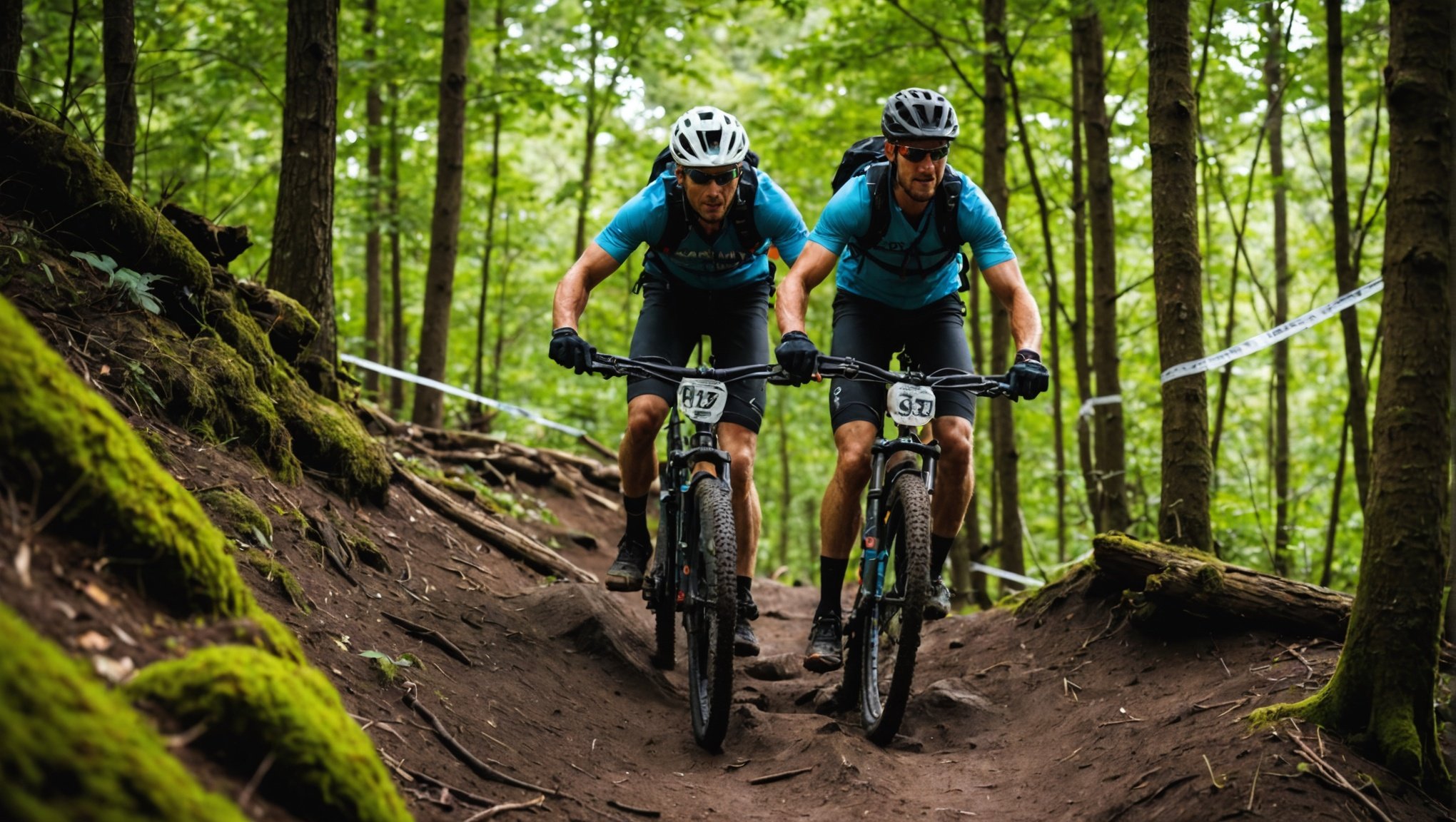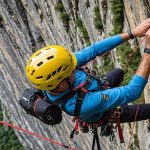Understanding Endurance and Strength in Mountain Biking
Mountain biking is more than the thrill of racing down a hill — it’s a test of both endurance and strength. These two attributes are crucial for conquering challenging terrains. But what do they really mean in this context?
Endurance training refers to improving your ability to sustain prolonged physical activity. In mountain biking, it’s the capacity to keep pedalling through long trails without succumbing to fatigue. Endurance helps riders tackle steep climbs and maintain a steady pace over extended distances, essential for when the trail gets tough and demanding.
Additional reading : Maximizing Speed: Effective Breathing Techniques for Swimmers to Minimize Drag
On the other hand, strength training focuses on building muscle power and resilience. This contributes to the ability to push harder, especially when faced with unexpected obstacles or treacherous paths. Strength training enhances performance by boosting a rider’s power output during intense sprints or difficult climbs.
Together, endurance and strength impact overall biking performance by enabling a cyclist to confidently tackle a variety of terrains and conditions. They are the bedrock of mountain biking fundamentals, allowing riders not only to perform better but also to enjoy each trail with greater ease and safety.
Also read : Mastering Marathon Pacing: Effective Strategies for Energy Management on Race Day
Essential Training Techniques for Endurance
Endurance workouts are crucial for improving performance and overall fitness. Incorporating diverse training regimes can significantly benefit cyclists aiming to increase their stamina.
Incorporating Long Rides
Long rides are fundamental to stamina building. Gradually increase the length of these rides to adapt your body efficiently. Start with a comfortable distance and slowly add more miles weekly. This method helps develop the endurance necessary to handle long distances.
Applying Interval Training
Interval training is a powerful tool in any endurance routine. It combines short bursts of high-intensity effort with periods of low-intensity recovery. This approach not only improves the body’s ability to handle lactic acid but also boosts overall stamina. A typical session might involve sprinting on a bike for one minute, followed by two minutes of easy pacing, repeated several times.
Cross-Training Activities
Engaging in cross-training activities like running or swimming can enhance your endurance workouts. These activities challenge different muscle groups, promoting a more balanced fitness level. This cross-training introduces variety and reduces the risk of burnout, keeping your routine enjoyable and sustainable.
Strength Training Regimen for Mountain Bikers
Building a successful strength training regimen tailored for mountain bikers isn’t just about speed and endurance on the trails. It’s about enhancing core stability, improving power output, and leveraging your body’s full potential through targeted strength workouts.
Focusing on Core Strength
A strong core is crucial for maintaining bike control and transferring power efficiently. It enables bikers to stabilize their bodies across various terrains. To build core strength, bikers should focus on exercises such as planks, Russian twists, and hanging leg raises. Each of these exercises engages the core muscles, aiding in improved balance and endurance.
Lower Body Workouts
Leg strength is paramount for climbing and powerful pedaling. Incorporating squats, lunges, and calf raises into your regimen can significantly boost your leg power. These strength workouts target major muscle groups in the legs, enhancing the ability to conquer steep climbs and endure longer rides.
Upper Body Conditioning
Upper body workouts are vital for superior bike handling and stability. Engaging in weight training exercises like push-ups, pull-ups, and dumbbell rows can improve arm and shoulder strength. This conditioning not only bolsters your overall stability but also enhances your capacity to maneuver your bike through tough trails.
Nutrition for Enhanced Performance
Successfully enhancing performance in endurance sports is about more than just practice. It pivots significantly on nutrition strategies. Consuming the right energy foods can make the difference between finishing strong and faltering halfway through.
To boost endurance, it’s crucial to invest in foods rich in complex carbohydrates, such as whole grains and legumes. These provide sustained energy and stamina. Simple sugars can also offer a quick energy boost, but they need to be used strategically within your training plan.
Hydration tips are equally essential. Properly hydrating before, during, and after rides ensures optimal performance. Water is fundamental, but for longer rides or intense training, electrolyte-balanced drinks might be necessary to replace lost minerals.
Tailoring your nutrition to fit your training schedule and ride intensity involves planning meals and snacks to suit the demands of various exertion levels. For shorter, intense training, a pre-workout meal rich in carbohydrates might be vital, while longer, steadier rides may require more balanced energy foods and consistent hydration.
Recovery Techniques for Optimal Performance
Utilising effective recovery methods is essential for athletes and fitness enthusiasts aiming to maintain optimal performance. These practices support muscle repair and aid in injury prevention, allowing you to stay at the top of your game.
Importance of Rest Days
Rest days play a critical role in muscle repair and growth. They give muscles time to recuperate after intense workouts, reducing the risk of overuse injuries. Skipping rest days can lead to burnout or even muscle damage, hindering progress. Allowing your body to recover helps maintain long-term fitness goals and enhances performance in future sessions.
Active Recovery Strategies
Incorporating active recovery techniques such as low-intensity activities can significantly improve blood circulation and expedite recovery. Activities like walking, swimming, or yoga enhance oxygen delivery to muscles, promoting efficiency in muscle repair. Incorporating such strategies ensures your body receives the benefits of recovery while keeping you engaged and energetic.
Effective Stretching Practices
Stretching post-exercise is vital for enhancing flexibility and preventing injuries. Dynamic stretches, before workouts, prepare muscles for activity, whereas static stretching, after exercise, promotes relaxation and muscle elongation. Focusing on both types helps maintain muscle flexibility and joint health, crucial for overall injury prevention. Prioritising these practices contributes to sustained physical performance over time.
Gear and Equipment Recommendations
Mountain biking is a thrilling pursuit that demands the right gear to ensure both safety and optimal performance. The cornerstone of this sport is having the essential mountain biking gear. A good quality helmet, padded gloves, and protective eyewear are indispensable. These items not only safeguard you against potential injuries but also enhance your comfort on challenging trails.
Bike maintenance is crucial for longevity and performance. Regular checks, such as brake adjustments, chain lubrication, and tire inspections, keep your ride smooth and safe. Neglecting maintenance can lead to unexpected mechanical failures, posing significant safety risks.
When it comes to essential accessories, several options can enhance your mountain biking experience. A hydration pack is vital for keeping hydrated, especially during long trail rides. Additionally, a multi-tool kit is invaluable, allowing quick fixes on-the-go, such as adjusting seat height or correcting a loose bike component.
For those looking to elevate their biking capabilities further, consider investing in a high-quality GPS device. This tool not only aids navigation on unfamiliar trails but also tracks your progress, providing valuable insights into your performance and helping you conquer new biking challenges with confidence.
Real-Life Tips from Experienced Mountain Bikers
Gaining a wealth of knowledge is easier when you tap into expert insights and personal anecdotes. Understanding how seasoned riders perfect this thrilling sport can transform your approach.
Learning from the Pros
Professional mountain bikers often share key insights, emphasizing skills like patience and resilience. They suggest focusing on mastering basic techniques before advancing. Implementing such approaches can enhance your confidence and ride quality on trails.
Advice from Local Riders
Listening to local riders offers valuable advice tailored to specific areas. They might recommend certain trails for different skill levels or suggest the best times to ride. Such tips help in discovering hidden gems and avoiding common beginner mistakes. By understanding local terrain, you can progressively build your skillset.
Joining a Mountain Biking Community
Joining a community has immense benefits, such as motivation and support during your biking journey. Community members often share community suggestions, sharing experiences and hosting group rides that foster camaraderie. This allows for engagement with diverse biking enthusiasts, offering a broad spectrum of advice and personal stories. Such connections enrich your experience and keep the motivation wheel spinning.
Connecting with experienced bikers, whether through clubs or solo meetups, can lead to lasting friendships and unparalleled biking adventures.











